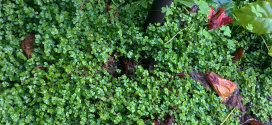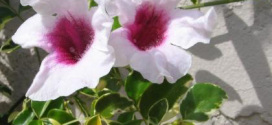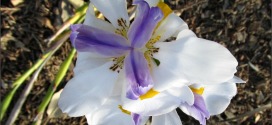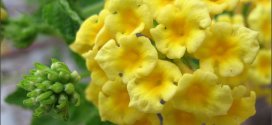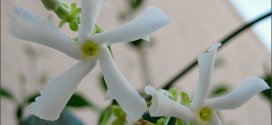Gardening enthusiasts often face the challenge of limited space, especially in urban settings. But did you know that you can grow a majestic Liquidambar tree right on your patio or balcony? Yes, it’s possible to cultivate this beautiful deciduous tree in a large pot, and I’m here to guide you through the process.
But First…
Don’t plant it in the ground! Liquidambar trees can grow 80 feet tall when planted in the ground. Back in the 1960s the City of Sunnyvale planted lots of the trees to line the streets. The problem is the mature trees drop lots of spiky seed pods that pose a tripping hazard for pedestrians and a puncture hazard for bicyclists. The City actually has a grant program so homeowners can remove them.
Our tree is actually a volunteer: the next door neighbor has a mature tree and a seed pod propagated in our yard. I moved it into a large pot.
Choosing Your Liquidambar Tree
The journey begins with selecting the right tree. Opt for a young Liquidambar, ideally around 30cm tall¹. A smaller tree will adapt more easily to pot living and allow you to shape its growth from the start.
Selecting the Perfect Pot
Your Liquidambar will need room to grow, so choose a pot that’s about 30-40cm in diameter and equally deep¹. Ensure it has good drainage to prevent waterlogging, which can be detrimental to the tree’s health.
The Right Soil
Liquidambar trees prefer acidic soil with a pH of 4 to 6¹. Use a high-quality potting mix designed for acid-loving plants. To keep the soil from escaping through the drainage holes, place a piece of mesh at the bottom of the pot before adding the soil.
Watering and Fertilization
Consistent watering is crucial, as Liquidambars do not tolerate drought well. Water your tree three times a week during summer and every 4-5 days for the rest of the year using rainwater or lime-free water¹. Fertilize in spring and summer with a product formulated for acid-loving plants, following the package instructions to avoid overfeeding¹.
Pruning for Shape and Health
Prune your Liquidambar in autumn or late winter. Start by trimming the main branch during the first year to encourage lower branch growth. In subsequent years, prune the branches little by little to maintain a manageable size and shape¹. Always remove any dry, diseased, or weak branches to keep your tree healthy.
Enjoying Your Potted Liquidambar
With the right care, your Liquidambar can thrive in a pot, providing you with a touch of forest grandeur in your own urban oasis. So, don’t let the lack of a traditional garden stop you from growing this stunning tree. With patience and proper care, you can enjoy the beauty of a Liquidambar tree in any space.
Details
From Wikipedia, the free encyclopedia
- Conservation status: Least Concern
- Kingdom: Plantae
- Clade: Tracheophytes
- Clade: Angiosperms
- Clade: Eudicots
- Order: Saxifragales
- Family: Altingiaceae
- Genus: Liquidambar
- Species: L. styraciflua
- Binomial name
- Liquidambar styraciflua
Synonyms
- Liquidambar gummifera Salisb. nom. superfl.
- Liquidambar barbata Stokes
- Liquidambar macrophylla Oerst.
- Liquidambar tuberculata Silba
American sweetgum (Liquidambar styraciflua), also known as American storax, hazel pine, bilsted, redgum, satin-walnut, star-leaved gum, alligatorwood, or simply sweetgum, is a deciduous tree in the genus Liquidambar native to warm temperate areas of eastern North America and tropical montane regions of Mexico and Central America. Sweetgum is one of the main valuable forest trees in the southeastern United States, and is a popular ornamental tree in temperate climates. It is recognizable by the combination of its five-pointed star-shaped leaves (similar to maple leaves) and its hard, spiked fruits. It is currently classified in the plant family Altingiaceae.
Names
This plant’s genus name Liquidambar was first given by Linnaeus in 1753 from the Latin liquidus (‘fluid’) and the Arabic ambar (‘amber’), in allusion to the fragrant terebinthine juice or gum which exudes from the tree. Its specific epithet styraciflua is an old generic name meaning ‘flowing with storax’ (a plant resin).
The sweetgum has a Nahuatl name, Ocotzocuahuitl, which translates to ‘tree that gives pine resin’ from ocotl (‘pine’), tzotl (‘resin’), cuahuitl (‘tree’), which refers to the use of the tree’s resin.
The common name “sweetgum” refers to the species’ “sweetish gum”, contrasting with the blackgum (Nyssa sylvatica), only distantly related, with which the sweetgum overlaps broadly in range. The species is also known as the “redgum”, for its reddish bark.
History
The earliest known published record of Liquidambar styraciflua is in a work by Spanish naturalist Francisco Hernández published posthumously in 1615, in which he describes the species as a large tree producing a fragrant gum resembling liquid amber, whence the genus name Liquidambar. In John Ray’s Historia Plantarum (1686) it is called Styrax liquida. However, the first mention of any use of the amber is described by Juan de Grijalva, the nephew of the governor of Cuba, in the year 1517. Juan de Grijalva tells of gift exchanges with the Mayas “who presented them with, among other things, hollow reeds of about a span long filled with dried herbs and sweet-smelling liquid amber which, when lighted in the way shown by the natives, diffused an agreeable odour.” The species was introduced into Europe in 1681 by John Banister, the missionary collector sent out by Bishop Compton, who planted it in the palace gardens at Fulham in London, England.
Happy gardening!


